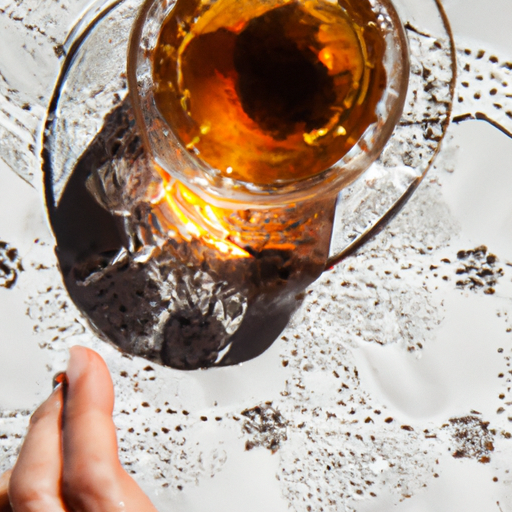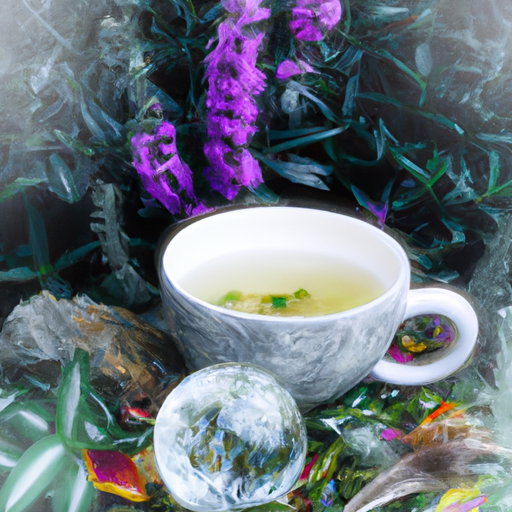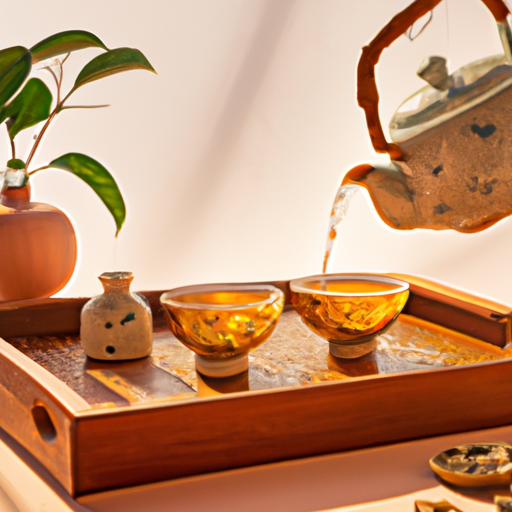Welcome to the fascinating world of tea leaf reading, where the secrets of the universe are revealed in the delicate remnants of a cup of tea.
Prepare to embark on a journey of self-discovery and mysticism as we delve into the ancient art of Tasseology, also known as tea leaf reading.
In this beginner’s guide, I will take you through the enchanting process of interpreting the shapes and symbols that form in the tea residue at the bottom of your cup. It is a practice that has been passed down through generations, originating from the wise and mystical Gypsies.
As you sip your tea and stir the leaves, you will witness a mesmerizing dance of symbols and patterns, each holding a meaning that is uniquely tailored to you. From letters to animals, lines to shapes, every element has significance and offers glimpses into your past, present, and future.
Throughout this guide, we will explore the origins of tea leaf reading, the process itself, and the symbolism behind the various shapes and patterns you may encounter.
So, grab your white ceramic or porcelain cup, brew a cup of loose leaf black tea, and get ready to unlock the secrets that lie within. The art of tea leaf reading awaits you.
Key Takeaways
- Tea leaf reading, also known as Tasseology, is a centuries-old method of fortune-telling using tea residue at the bottom of a cup.
- Tea leaf reading requires practice, knowledge, and imagination to interpret the shapes and symbols formed by the tea residue.
- Special tea leaf reading cups with zodiac signs or playing card symbols can be used, but regular cups are also suitable.
- Loose leaf black teas with smaller broken leaves are suitable for tea leaf reading.
What is it?
Tea leaf reading, also known as Tasseology, is a centuries-old method of fortune-telling using the residue left at the bottom of my tea cup. It’s a fascinating and mystical practice that has been passed down through generations.
While some may be skeptical of its accuracy, many believe that tea leaf reading can provide valuable insights into the future.
One of the benefits of tea leaf reading is its ability to tap into our intuition and subconscious mind. By focusing on the symbols and shapes formed by the tea leaves, we can gain a deeper understanding of ourselves and the situations we find ourselves in. It can also be a therapeutic and meditative practice, allowing us to relax and reflect.
If you’re interested in trying tea leaf reading, there are a few tips to improve accuracy. First, it’s important to have a clear and focused mind. Before drinking the tea, take a few moments to set your intention and ask a question silently in your mind.
Secondly, practice makes perfect. The more you engage in tea leaf reading, the better you’ll become at interpreting the symbols and their meanings.
Lastly, trust your intuition. Sometimes the meaning of the symbols may not be immediately clear, but by trusting your gut feelings, you can unlock their significance.
Tea leaf reading is a beautiful and ancient art form that can provide valuable insights into our lives. Whether you’re a believer or a skeptic, it’s worth exploring this mystical practice and seeing what the tea leaves have to say.
Process and Origins
I was amazed to discover that Tasseology, the ancient method of fortune-telling using the residue at the bottom of a cup, has been practiced by fortune tellers and amateurs in numerous countries for centuries. Tea leaf reading techniques have evolved over time, requiring practice, knowledge, and imagination to interpret the shapes and symbols formed by the tea residue.
The process begins with steeping loose leaf tea or ground coffee in a white ceramic or porcelain cup. After drinking the tea, the leaves are stirred in the cup, and the liquid is then turned onto a napkin to collect the remaining residue.
The cultural significance of tea leaf reading is evident in its origins with Gypsies and its continued practice worldwide. It is believed that the person drinking the tea can influence the formation of symbols specific to them, adding a personal touch to this ancient art form.
Symbols and Interpretations
Symbols and interpretations in Tasseology involve studying the shapes and figures formed by the residue at the bottom of the cup. When it comes to common tea leaf symbols, there are a variety of shapes and objects that can appear during a reading.
For example, letters can represent names or initials of people in your life, while animals can signify certain characteristics or events. Lines can indicate a journey or path, and shapes like snakes or spades may suggest challenges or obstacles ahead. Mountains can symbolize strength or stability, while houses may represent your home or family life. Question marks can signify uncertainty or a need for guidance.
Hearts often symbolize love or relationships, and acorns can represent new beginnings or potential growth. The placement of these symbols in the cup is also important, as symbols closer to the rim or handle may have different interpretations. Interpreting tea leaf patterns requires imagination and intuition, as each reading is unique and personal.
Frequently Asked Questions
Are there any specific rituals or preparations that need to be done before starting a tea leaf reading session?
Before starting a tea leaf reading session, it is important to create a calm and sacred space. Clear my mind and focus my intentions. I can also incorporate rituals like lighting candles or burning incense to enhance the energy.
Can tea leaf reading be done with any type of tea or are there specific teas that are recommended?
There are specific teas recommended for tea leaf reading, such as loose leaf black teas with smaller broken leaves. Using these teas can enhance the accuracy of the symbols and shapes formed in the cup, making the reading more meaningful and insightful.
How long does it typically take to become proficient in tea leaf reading and start interpreting the symbols accurately?
Becoming proficient in tea leaf reading and accurately interpreting symbols requires practice, patience, and a keen eye. Through studying tea leaf reading techniques and analyzing symbolic patterns, one can develop their skills over time.
Are there any common mistakes or misconceptions that beginners should be aware of when practicing tea leaf reading?
Common mistakes beginners should avoid in tea leaf reading include relying too heavily on literal interpretations, neglecting the importance of symbolism, and not considering the placement of symbols in the cup. Proper interpretation is key to accurate readings.
Can tea leaf reading be done remotely or does it require the physical presence of the person drinking the tea?
Tea leaf reading can indeed be done remotely, but there is something magical about being physically present. Remote readings offer convenience, but in-person readings allow for a deeper connection and a more intimate experience.
Conclusion
In conclusion, tea leaf reading is a fascinating ancient technique that offers insight into the future. By interpreting the shapes and symbols formed by tea residue, individuals can gain a deeper understanding of their lives and the world around them.
This art form, originating from Gypsies, has been practiced for centuries and continues to captivate fortune tellers and enthusiasts worldwide.
So, grab a white ceramic cup, steep some loose leaf tea, and let the magic of tea leaf reading unfold before your eyes, like a beautiful tapestry woven by the hands of fate.










